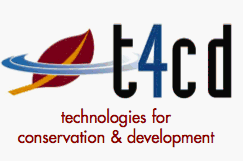Sunday, January 15, 2006
Introduction to Tracking
Like GIS systems, satellite tracking is a widely used and popular technology in the conservation world. Recent advances in the technology, principally the reduction in size and weight of the 'collars', and an increase in battery life (and the incorporation of solar cells) has meant that tracking and monitoring capability is being extended to include smaller species, such as snakes and birds. Further advances mean that environmental data can also be collected, such as air temperature and, for marine animals, depth and heart rate, all of which contributes to a greater understanding of the target species. Combined with other technologies, such as GSM networks, data can be made quickly and easily available. As the reach of GSM mobile networks becomes greater and greater, the emergence of 'location-based services' may have particular relevance as a tracking tool. In addition, the continued development of Europe's Galileo GPS service - which promises improved accuracy over the existing US-based service, as well as the ability to provide a fix in more condensed areas - provides further options for conservationists.
The commercial development of vehicle and asset-tracking devices provides further insight, along with the huge potential of RFID (Radio Frequency Identification) tagging - something still very much in its infancy but believed to be the 'next big' thing in the technology world.
The Biometrics approach, with the potential application of image recognition technologies, developed in the first instance as security tools (iris/ear lobe/gait recognition etc), to the monitoring of individual animals such as elephants, is another area worth watching.
What do you think? Please use the comments feature to let us know and help to shape our discussion.
The commercial development of vehicle and asset-tracking devices provides further insight, along with the huge potential of RFID (Radio Frequency Identification) tagging - something still very much in its infancy but believed to be the 'next big' thing in the technology world.
The Biometrics approach, with the potential application of image recognition technologies, developed in the first instance as security tools (iris/ear lobe/gait recognition etc), to the monitoring of individual animals such as elephants, is another area worth watching.
What do you think? Please use the comments feature to let us know and help to shape our discussion.
